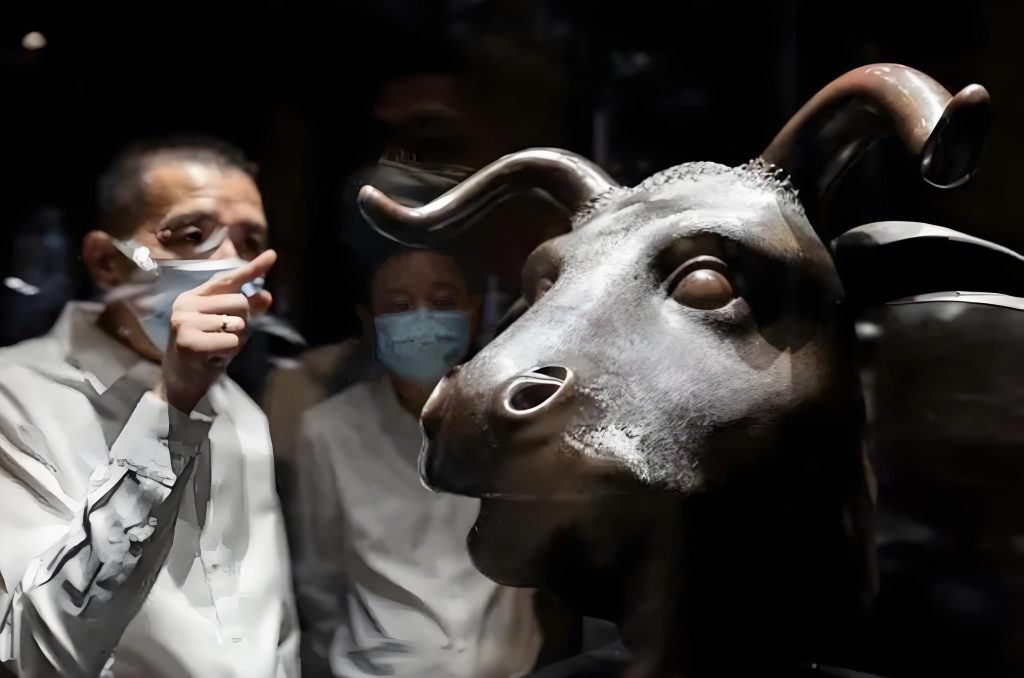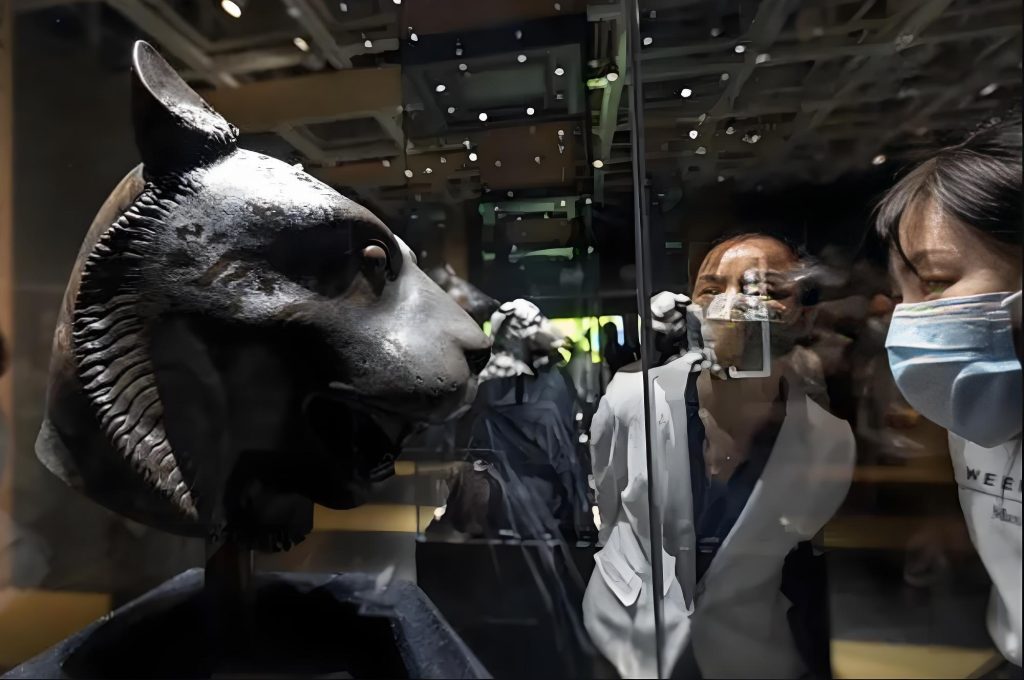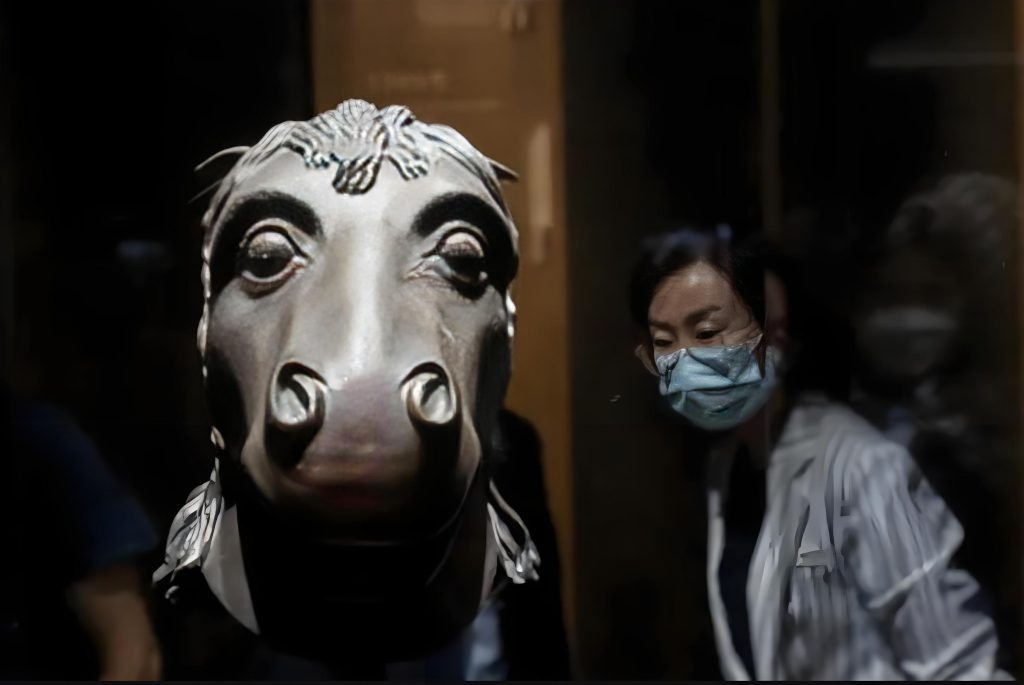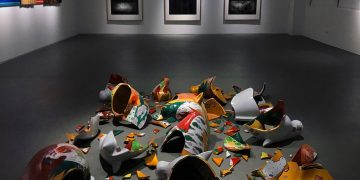In the golden hues of autumn, Shanghai embraced a cultural milestone as the “Return of Glory – Overseas Repatriated Cultural Relics Special Exhibition” unveiled its doors at the Minhang District Museum on September 26, 2022. This momentous event marked not just the reunion of exquisite artifacts scattered across the globe but also a testament to the enduring allure and resilience of Chinese cultural heritage. The exhibition, divided into two captivating sections – “Reunion in Splendor” and “Continuation of Magnificence” – showcased 47 meticulously curated masterpieces, each a testament to the pinnacle of artistic craftsmanship spanning various eras from ancient China.

The Star Attractions: The Four Bronze Heads Reunited
At the heart of the exhibition lay a rare and emotional reunion of four of the twelve iconic Bronze Heads of the Zodiac, originally crafted for the Haiyantang Fountain in the Yuanming Yuan (Old Summer Palace) during the Qing Dynasty. The intricate sculptures of the Ox, Tiger, Monkey, and Pig Heads, each a masterpiece of Chinoiserie, captivated visitors with their intricate detailing and historical significance. Their presence, alongside a meticulous replica of the Horse Head, evoked a sense of nostalgia and pride, reminding onlookers of the grandeur and tragedy that once adorned the imperial gardens.

These bronze heads, cast in a blend of Eastern aesthetics and Western sculptural techniques, symbolize not only the fusion of cultures but also the profound loss suffered during the tumultuous history of China. Their return, facilitated by the efforts of Poly Art Museum and the Yuanming Yuan Administrative Office of Haidian District, Beijing, serves as a beacon of hope for the eventual reunion of all twelve heads, a dream cherished by countless Chinese hearts.


A Journey Through Time: Bronze Masterpieces from Ancient China
Beyond the Zodiac Heads, the exhibition delved deeper into the rich tapestry of Chinese history, presenting a spectacular array of bronze vessels from the Shang, Zhou, Spring and Autumn, Warring States, and Han Dynasties. These artifacts, each a national treasure in its own right, boasted intricate patterns etched with tales of ancient rituals, beliefs, and power dynamics. The shimmering surfaces, adorned with intricate reliefs of dragons, phoenixes, and mythical creatures, spoke volumes about the sophistication of ancient Chinese bronze casting techniques and the profound spiritual significance attributed to these vessels.
One could almost hear the echoes of ancient ceremonies as they gazed upon these artifacts, each carrying the weight of centuries and whispers of a bygone era. The exhibition thus became a living, breathing chronicle of China’s rich cultural heritage, inviting visitors on a journey through time, from the mystical realms of prehistory to the grandeur of imperial China.
The Significance of Repatriation
The repatriation of these cultural treasures is more than just a physical return; it represents a reclamation of identity and memory. Each piece is a link to the past, a reminder of China’s rich cultural legacy and the resilience of its people. In an era where globalization has blurred cultural boundaries, such exhibitions serve as a powerful reminder of the importance of preserving and celebrating one’s heritage.
Moreover, the exhibition underscores the collaborative efforts of governments, museums, and private organizations in ensuring that cultural treasures scattered across the world find their way back home. It highlights the role of diplomacy and cultural exchange in fostering mutual understanding and respect between nations, emphasizing the universality of art and history in binding humanity together.
The Legacy Lives On
As visitors marveled at the exhibits, they were not just witnessing the beauty of ancient craftsmanship; they were also participating in a living, breathing narrative of China’s cultural renaissance. The “Return of Glory” exhibition serves as a catalyst, inspiring further research, education, and appreciation for China’s vast and vibrant cultural heritage.
In conclusion, the grand reunion of 47 national treasures in Shanghai is more than a momentous occasion; it is a testament to the enduring power of art and history to bridge the past and present, uniting people from all walks of life in a shared admiration for the beauty and wisdom of ancient China. As the exhibition draws to a close, it leaves behind a legacy of inspiration and hope, a beacon calling for the continued preservation and celebration of cultural heritage worldwide.
















































